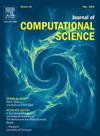模糊计算器-管理需要的工具
IF 3.1
3区 计算机科学
Q2 COMPUTER SCIENCE, INTERDISCIPLINARY APPLICATIONS
引用次数: 0
摘要
模糊逻辑和模糊系统模型已成为管理领域的流行工具,因为它们能够有效地处理不确定性。我们在作者原始方法的基础上提出了一个工具,专注于解决由人为因素引起的模糊性或不确定性影响的复杂管理问题。为此,我们展示了工具的功能原理与人类大脑中发生的过程之间的联系,包括外部观察者对其结构的描述。接下来是对模糊命题逻辑、模糊集理论和由此得出的结论的概述。主要部分是对模糊系统对所考虑的备选方案进行多准则评价的计算过程进行代数描述,模糊系统作为模糊计算器的执行单元。这是一个流程图,说明其功能的算法补充。模糊计算器与其他模糊系统的不同之处在于,它将所有语言变量(无论语言值的数量)标准化,形成一个由L、M和H三个术语组成的统一框架,这些术语使用梯形模糊数表示,确保了精确的数学表征。在转换过程中,通过结合原始语言项的支持区间的位置来保留原始语言项,从而保持了输入信息的特异性。这种方法建立了模糊计算器作为一个通用的和高度适应性的工具,能够解决广泛的实际管理问题与改进的一致性和控制。本文章由计算机程序翻译,如有差异,请以英文原文为准。
Fuzzy calculator – A tool for management needs
Fuzzy logic and fuzzy system models have become popular tools in the field of management as they enable efficient handling of uncertainty. We present a tool based on the authors´ original approach focused on solving complex managerial problems affected by the vagueness or uncertainty caused by the human factor. For this purpose, we show the connection between the functioning principle of the tool and processes occurring in the human mind including a description of its structure as perceived by an external observer. This is followed by an overview of selected fragments of fuzzy propositional logic, the theory of fuzzy sets, and the conclusions derived from it. The main part consists of formulating an algebraic description of the computational process of multi-criteria evaluation of the considered alternative performed by a fuzzy system, which serves as the executive unit of a Fuzzy calculator. This is supplemented by a flowchart diagram illustrating the algorithm of its functioning. The Fuzzy calculator distinguishes itself from other fuzzy systems by standardizing all linguistic variables, regardless of the number of linguistic values, into a unified framework comprising three terms L, M, and H, which are represented using trapezoidal fuzzy numbers, ensuring precise mathematical characterization. During the transformation, the original linguistic terms are preserved by incorporating the positions of their support intervals, thereby maintaining the specificity of the input information. This approach establishes the Fuzzy calculator as a universal and highly adaptable tool, capable of addressing a wide range of practical managerial problems with improved consistency and control.
求助全文
通过发布文献求助,成功后即可免费获取论文全文。
去求助
来源期刊

Journal of Computational Science
COMPUTER SCIENCE, INTERDISCIPLINARY APPLICATIONS-COMPUTER SCIENCE, THEORY & METHODS
CiteScore
5.50
自引率
3.00%
发文量
227
审稿时长
41 days
期刊介绍:
Computational Science is a rapidly growing multi- and interdisciplinary field that uses advanced computing and data analysis to understand and solve complex problems. It has reached a level of predictive capability that now firmly complements the traditional pillars of experimentation and theory.
The recent advances in experimental techniques such as detectors, on-line sensor networks and high-resolution imaging techniques, have opened up new windows into physical and biological processes at many levels of detail. The resulting data explosion allows for detailed data driven modeling and simulation.
This new discipline in science combines computational thinking, modern computational methods, devices and collateral technologies to address problems far beyond the scope of traditional numerical methods.
Computational science typically unifies three distinct elements:
• Modeling, Algorithms and Simulations (e.g. numerical and non-numerical, discrete and continuous);
• Software developed to solve science (e.g., biological, physical, and social), engineering, medicine, and humanities problems;
• Computer and information science that develops and optimizes the advanced system hardware, software, networking, and data management components (e.g. problem solving environments).
 求助内容:
求助内容: 应助结果提醒方式:
应助结果提醒方式:


